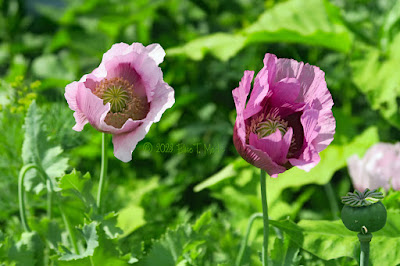Mayapple is a perennial wildflower and ground covering that is much more common in native woodland areas than in cultivated gardens. Botanical Name: Podophyllum peltatum. Common Names: Mayapple, American mandrake, wild mandrake, Indian apple, duck's foot, American mandrake or ground lemon, is an herbaceous perennial plant of the Berberidaceae (Barberry) family having umbrella shaped leaves. The plant is native to the woodlands of the eastern United States and southeastern Canada and has been used medicinally for hundreds of years by 1st Nations peoples to treat constipation, wart removal, rheumatism and liver disorders as well as a laxative.
Mayapple is quite easy to identify because nothing else looks even remotely like it. Moreover, as a perennial that spreads via rhizomes to form large colonies, you're most likely to encounter it in a mass formation that's hard to miss.
Growing 12 to 18 inches tall, each plant has a single stem with one or two large, heavily divided umbrella-like leaves. Plants with two leaves may produce a large white flower with six to eight petals in early spring, though the flower is usually hidden beneath the leaves. The flower is called mayapple because the bloom's appearance is reminiscent of apple blossoms. The flowers give way to a single greenish lemon sized fruit that turns golden when ripe. Once it has turned yellow, the mayapple fruit is safe for human consumption. This is a unique fruit, with an indescribably exotic flavor that conjures up visions of sunny tropical isles. In excess the fruit can cause colic so don’t overdo it.
While not edible, mayapple rhizomes are used for all sorts of medicinal applications. Native Americans valued the rhizome-Root which is most active medicinally in early spring when it is beginning to shoot. This plant's roots and leaves are toxic to both humans and animals.

My photographs are available for purchase through EliseCreations.net
Thanks for your visits, favs and comments. As always, appreciated very much!
© all rights reserved by Elise T. Marks.
Please do not use this image on websites, blogs or any other media without my explicit written permission.




































